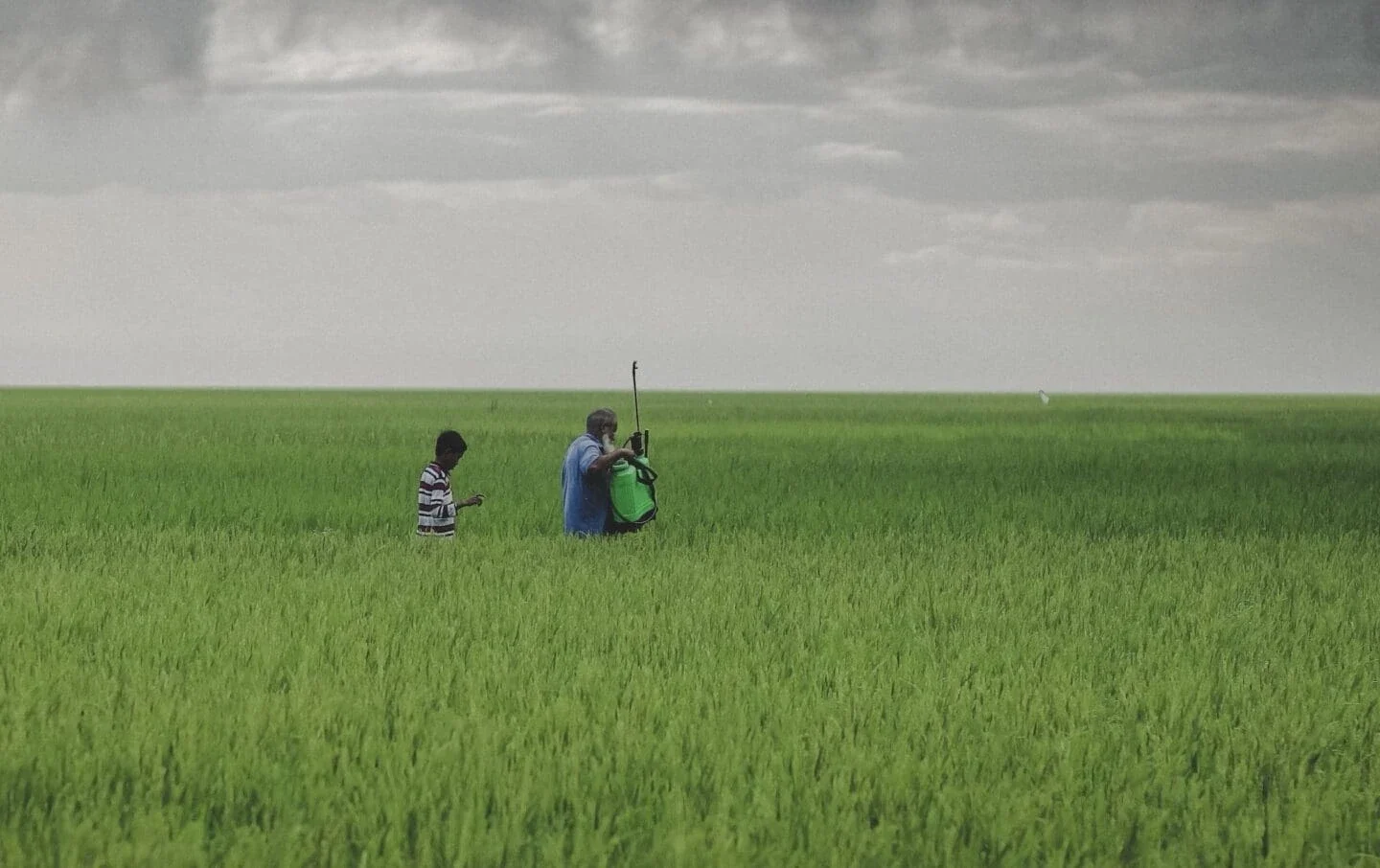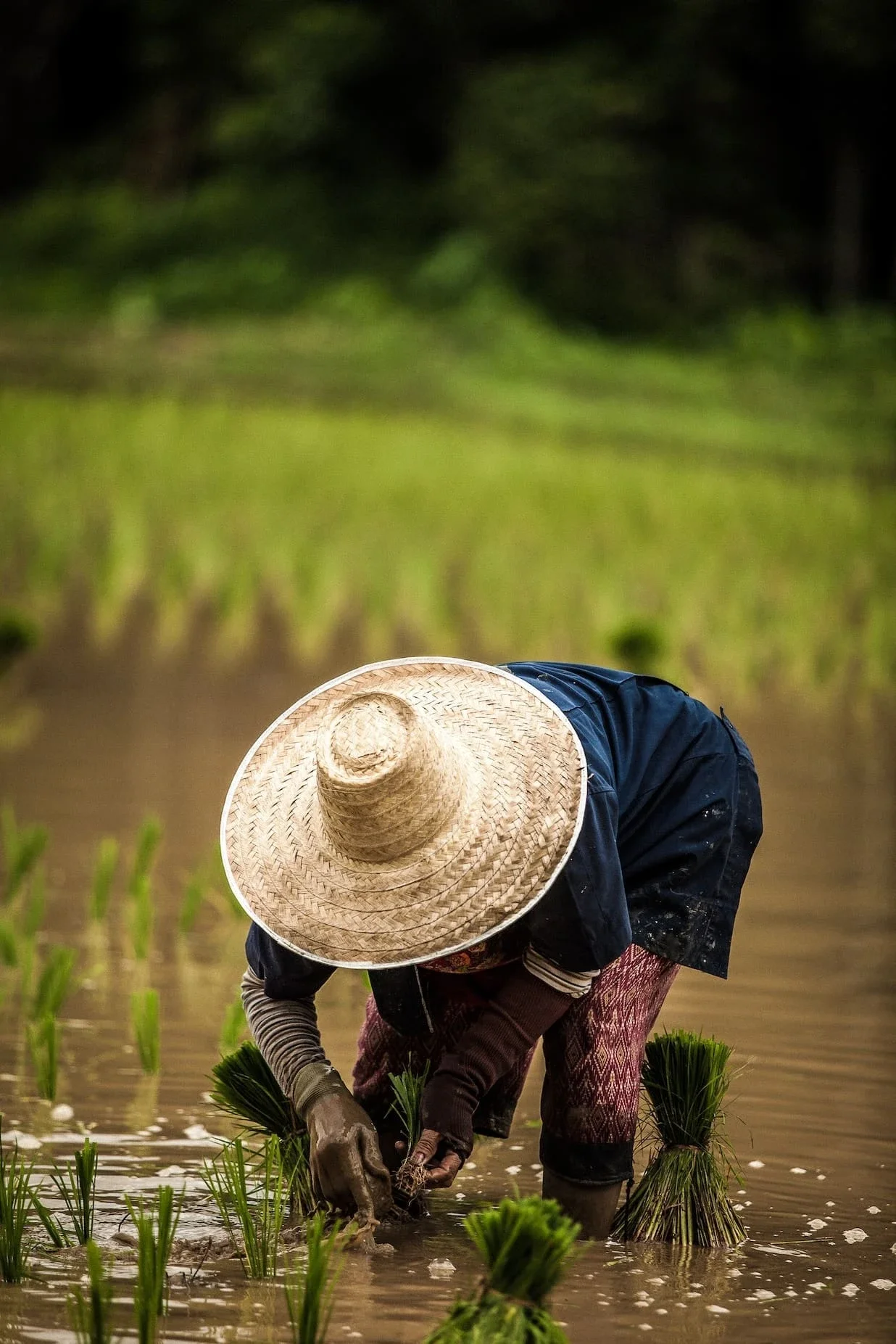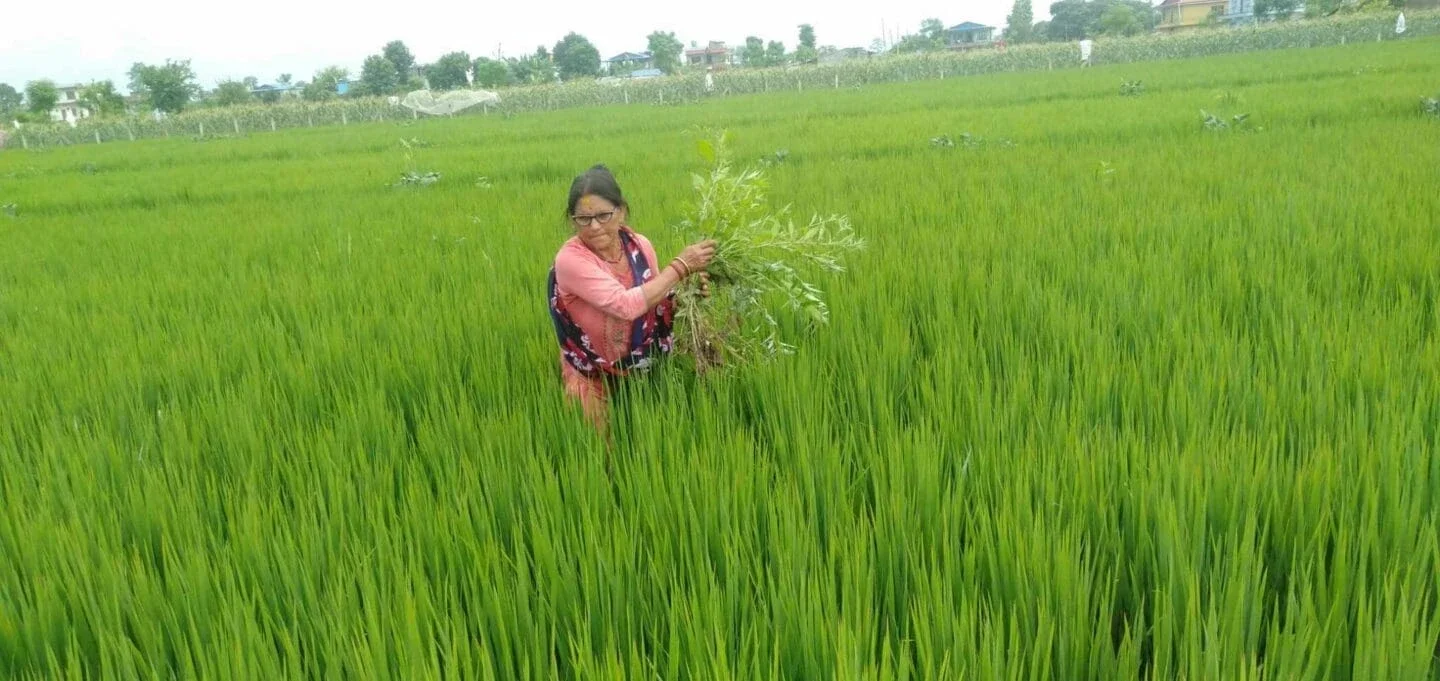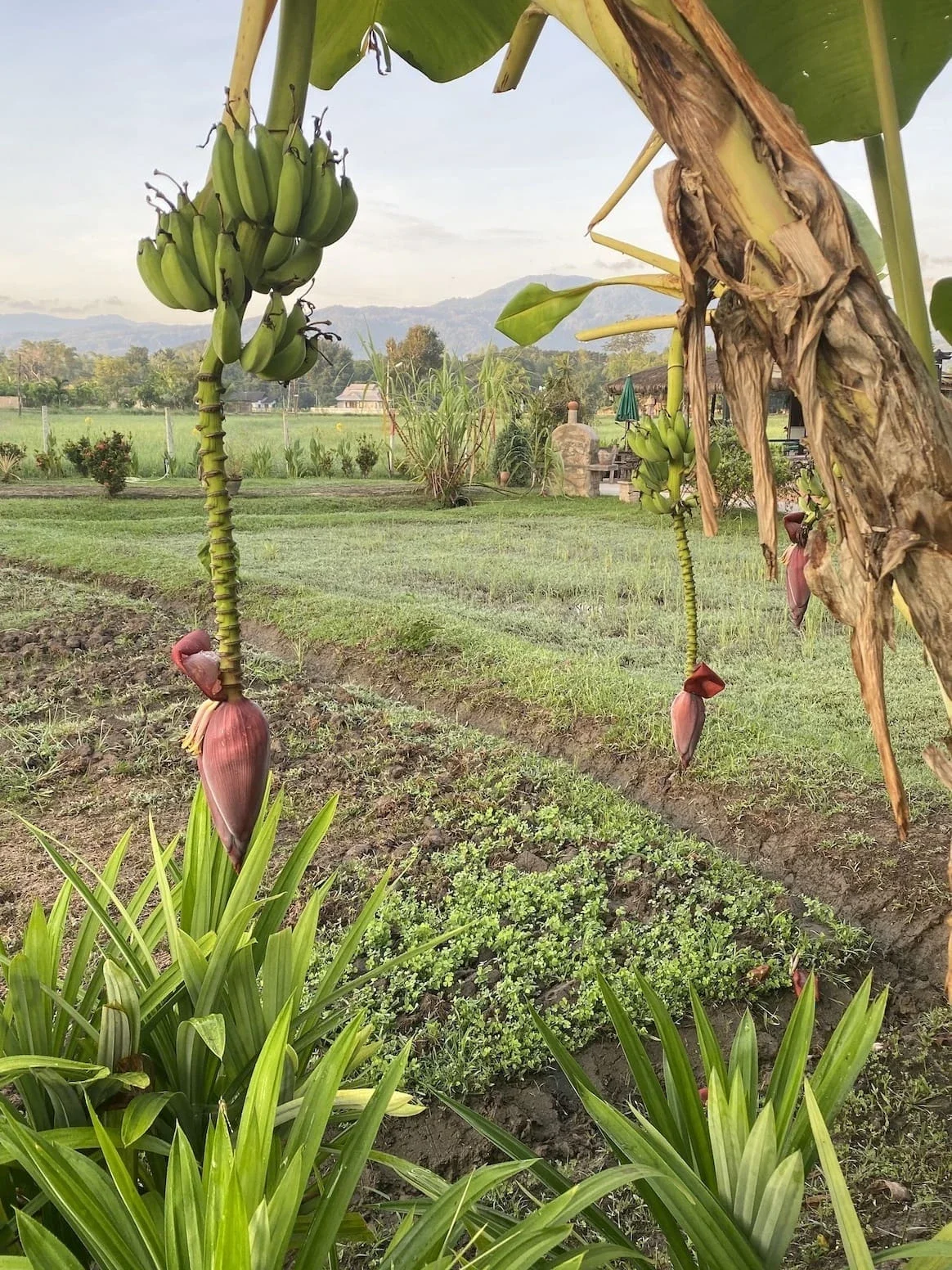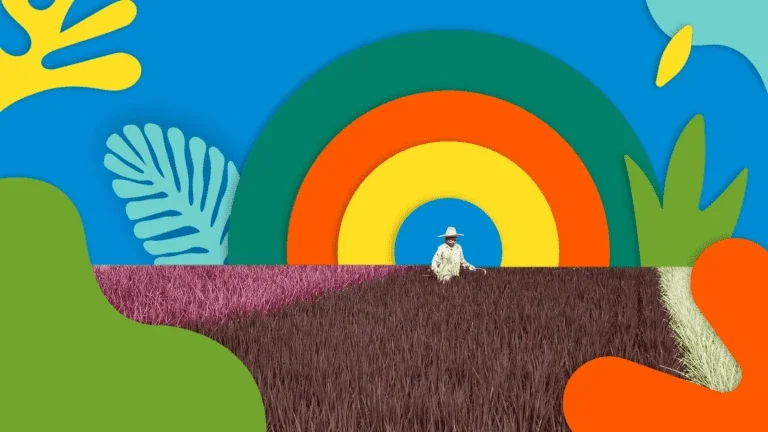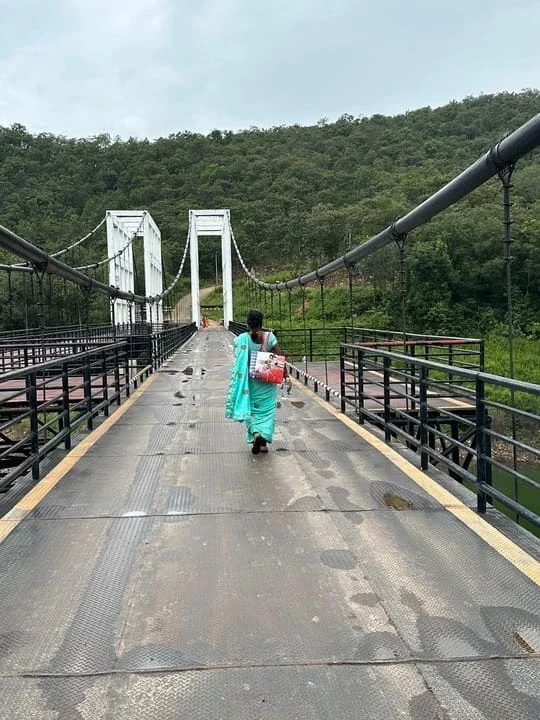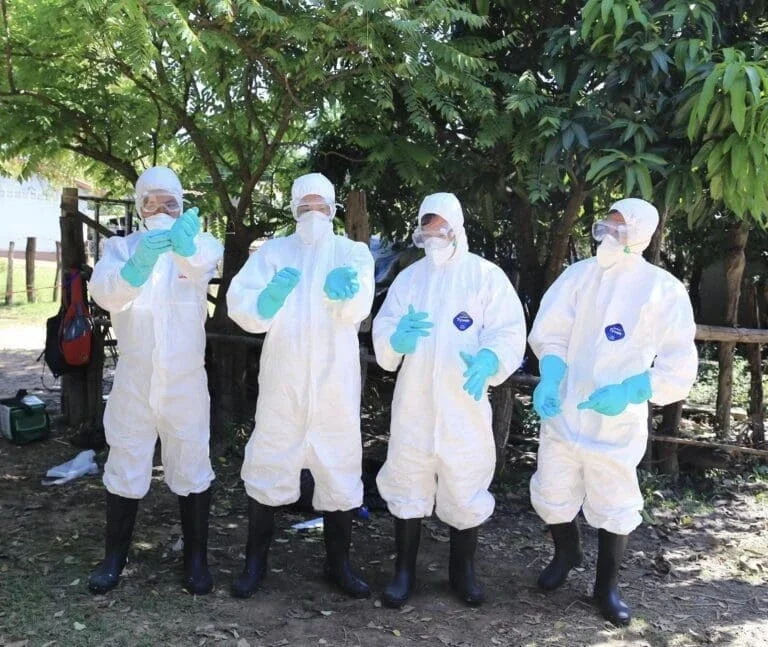“That gave me a taste for this work,” he said. “I thought, this is where I can have an impact. When you see a wall, there is always a way around it.”
Now a young plant scientist obtaining his PhD at the Thailand-based Asia Institute of Technology, he is part of a new project supported by The Rockefeller Foundation to identify the most carbon-efficient methods of rice cultivation, with climate change as a driving force in the research.
“The Rockefeller Foundation is taking the right step at the right moment,” noted Prof. Avishek Datta, Head of AIT’s Food, Agriculture and Bioresources Department and project lead.
This work has become critically important as global food insecurity increases, in part due to shifting climate patterns.
A Global Food Staple - and A Water Guzzler
Growing concerns about global food security are one reason the project is urgent. To feed its population, the world will need to produce about 70 percent more food by 2050, the World Bank projected.
Even in 2022, some 29.6 percent of the global population experienced moderate to severe food insecurity, according to the most recent State of Food Security and Nutrition in the World report.
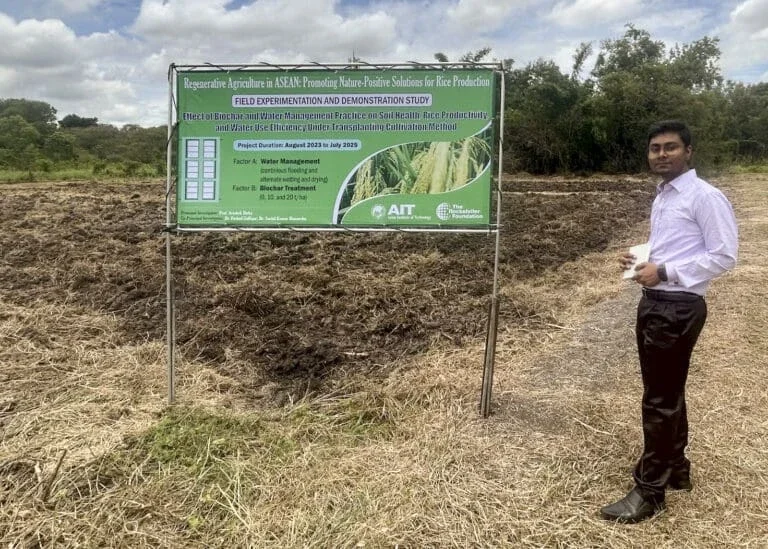
The amount of water needed to grow rice is another issue. Currently, more than one-fourth of the world’s population does not have access to clean drinking water, and by 2050, about two-thirds will face at least one month of water shortages, the United Nations projects.
All this impacts rice, a food staple for more than 3.5 billion people around the globe — as well as the world’s most water-intensive crop. Up to 5,000 liters (1,320 gallons) of water are required to produce a kilogram (2.2 pounds) of rice using traditional farming methods.
“We have to focus on research that will teach us how to minimize that input,” said Datta. “Because rice is important. It’s not just a crop. It is part of our culture.”
The way that food is produced also contributes to the climate crisis. The global food system is responsible for about a third of greenhouse gas emissions, second only to the energy sector. It is the number one source of methane and biodiversity loss.
Climate change impacts agriculture, and agriculture impacts climate change. So we have to address both sides of the coin.
Professor Avishek DattaHead, AIT's Department of Food, Agriculture, and Bioresources
Why it matters
- 0BillionBillion
people globally consume rice as a food staple
- ~0GallonsGallons
of water is needed to produce one pound of white milled rice
- ~0%%
more food needs to be produced globally by 2050 to feed the planet
From Desk Research to Greenhouse to Field
AIT, is a post-graduate institution founded in 1959 to develop professionals who will lead sustainable development in the Asia-Pacific region through education, research, and outreach. It currently has more than 1,740 students from more than 40 countries and a faculty of 144 from more than 20 countries.
“AIT’s mix of regional makeup, technical strength, climate focus, and commitment to translating research to impact makes it an ideal partner for this project,” said Deepali Khanna, Senior Vice President, Asia Regional Office, The Rockefeller Foundation. “By bringing empirical rigor to the study of agricultural emissions while engaging government and agricultural community stakeholders, AIT will advance efforts to identify, promote, and mainstream emissions-reducing and livelihood-enhancing agricultural techniques.”
The project opened with thorough research to consolidate scattered data, aimed at estimating the amount of harmful emissions attributable to rice production, and identifying effective methods for mitigating those emissions while still achieving robust yields.
At the start of the rice-growing season in November, the investigations transition to pilot sites in the greenhouse and the field to evaluate nature-positive solutions.
With the help of soil sampling kits and moisture sensors, the team plans to experiment with the Alternate Wetting and Drying (AWD) technique, varying the time intervals between flooding and drying rice paddies to determine how much water can be conserved without compromising rice yields.
They will also experiment with various amounts and types biochar, a charcoal made from organic materials, and analyze its impact on soil fertility and nitrogen utilization.
“There is no single silver bullet,” Datta said. “We will just try to find the most efficient combinations of techniques.”
Engaging Farmers, Including Women
Farming communities in Thailand, Laos, and Cambodia have been actively involved from the project’s inception, allowing them to provide guidance and learn alongside the AIT team. “The work doesn’t have power until the knowledge is transferred to the farmer,” Datta said.
One student involved in the project, Aliza Adhikari of Nepal, called out the importance of ensuring women farmers are involved in designing, implementing and monitoring climate-smart agriculture.
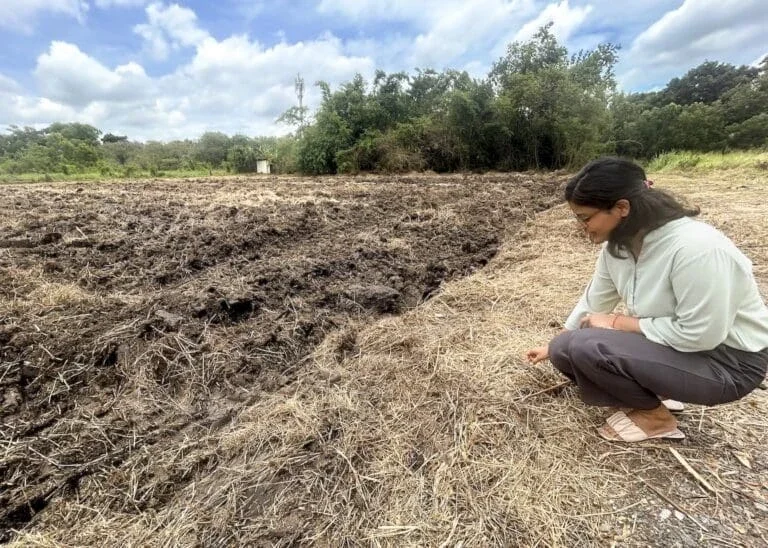
Globally, women represent 43 percent of the agricultural labor force, but few are landowners and most do not receive the same economic benefits as their male counterparts. In Nepal, more than 74 percent of women work in agriculture, according to the World Bank, but their work often remains unpaid and unrecognized.
Adhikari’s grandmother Sabitri Aryal was the initial source of Adhikari’s interest in farming and water management. Aryal raises rice, soybeans, and lentils in the village of Aadarsha Tole in Chitwan district in southern Nepal, an area rich with dense forests, vibrant grasslands, and meandering rivers. For many residents, the agricultural seasons dictate the pace of life.
In addition to farmers, government agriculture officials will be consulted with an eye to future policies and to deepening the partnership between policymakers and research centers. The private sector will participate in evaluating the business case, focusing on long-term sustainability.
To allow for an exchange of learnings and data, AIT will also connect to Regen 10, a farmer-centric evidence-based coalition galvanized to answer the question of what it would take to produce 50 percent of the world’s food in ways that benefit people, nature, and climate by 2030.
The hope is that the inclusive nature of the project, which creates new partnerships and deepens other, could herald regional changes to make rice farming fit for the moment.
“It takes a long time to transform systems, and it’s a complex process,” AIT President Kazuo Yamamoto said during a visit to AIT. “It depends on social conditions, affordability, farmers’ perceptions, and more. But right now, climate change is a catalyst. We have no alternative but to adapt.”
More in this Matter of Impact Edition
A Young Leader Joins Indigenous Communities To Protect the “Lungs of the Earth”
The Amazon is critically important to the world. Meet one young woman working with its Indigenous communities to save it.
Read MoreYoung Climate Activists Reach Across the Aisle To Build Solutions
The young take the lead in building a non-partisan climate movement fit for the future.
Read More